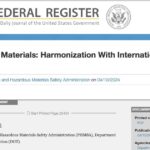We train and equip ourselves for a lot of high-danger, low-frequency incidents. And smart teams spend most of their training time for those events that are more likely to happen, with less, but still consequential outcomes.
So, yes, a passenger jet could crash into a truck convoy carrying nuclear waste. But, you are far more likely to get called to the local industrial plant because of a leak due to poor design, maintenance, safety practices or all of the above.
Earlier this year, Axios dug through 20 years of U.S. Environmental Protection Agency data and singled out the three most frequent chemicals cited when incidents occurred.
Axios found — in their order of frequency — ammonia, chlorine and chlorine dioxide, and hydrofluoric acid as the top three chemicals released.
Hazmat teams and ammonia are no strangers. Whether it is a leak at an ice rink, such as this one, or a leak at a food-processing plant like this one, ammonia incidents will happen. And we may be looking at ammonia used as an ingredient in fuel; here’s more on that.
Also Read: Four Steps for Handling an Ammonia Leak
Likewise, we are also quite familiar with chlorine. One of the largest leaks in the U.S. dates back to 1991. Water treatment plants are often the site of leaks. And their frequency draws plenty of discussion on how to mitigate them, such as can you use a master stream on chlorine leaks? Spoiler alert: it is risky business.
Also Read: Four Lessons From Chlorine Leaks
Hydrofluoric acid may not be the main reason for the call, but when it is present, the seriousness goes up.
Book author Ron Holcomb takes readers through a trying incident he and other hazmat teams responded to, highlighting the amount of cross-agency coordination needed to get these incidents under control. And this CSB report on a refinery explosion shows how much caution needed to be taken due to hydrofluoric acid being stored at the refinery — even though it was not part of the initial emergency.
Original post – Copyright © 2024 HazmatNation.com. Externally linked references may hold their own independent copyright not assumed by HazmatNation











